|
It
is difficult to make an ordinary folk painting, but just stop a moment and
consider what it takes to make a copper embossed painting describing folk
subjects. One such skilful artisan is Le Van Phu from Hanoi who has
indulged in the craft for the last 30 years. Artisan Le
Van Phu focuses in producing paintings about folk themes that makes his
works unique and of high artistic value.
|
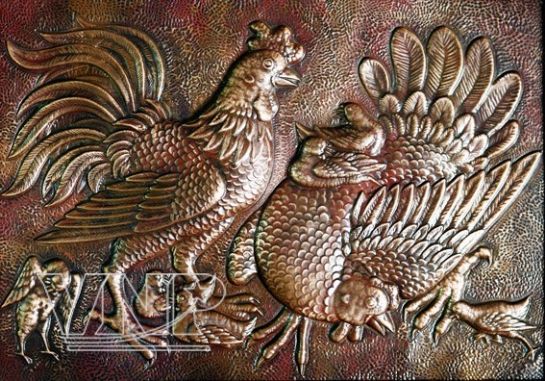 A "Chicken" (adapted from Dong Ho
folknbsp;painting). A "Chicken" (adapted from Dong Ho
folknbsp;painting).
|
|
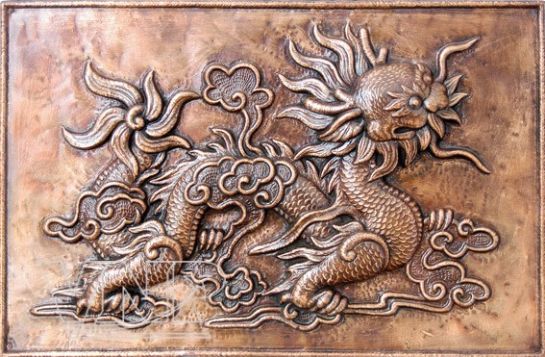
nbsp;“Dragon
in the Nguyen Dynasty”.
|
|

nbsp;“Ancient horse”.
|
|
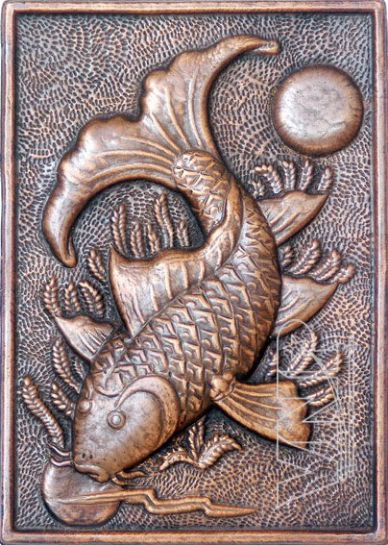
“Fish beholding moon” (adapted from Hang Trong folk
painting).
|
|
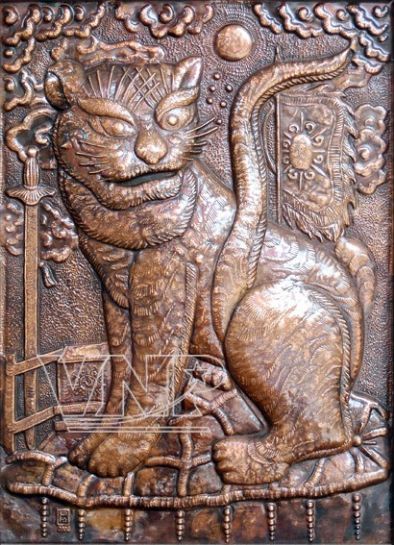
“Tiger” (adapted from
Hang Trong folk painting).
|
|
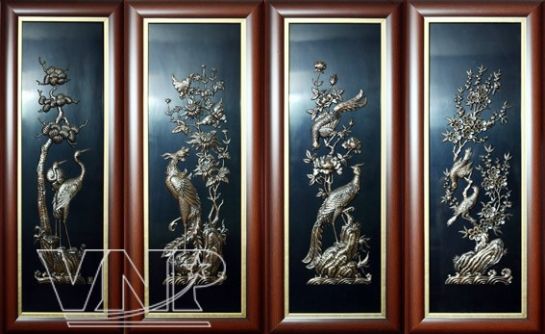
Copper embossed painting set of four seasons:
Spring-Summer-Autumn-Winter.
|
Everyday
people see him working at a small table, meticulously taking steps to make
a copper embossed work. First, he carefully duplicates a painting then
adds some personal artistry that will convey his feelings and also enhance
the copper additions, all the while preserving the original interpretation
of the work.nbsp; nbsp;
The
next step, and obviously the most difficult, is to turn rough pieces of
copper into an embossed work. For example, to make an embossed painting
from a Dong Ho folk painting titled "A herd of pigs", with the piglets
accounting for 10cm2 in area, the most difficult
undertaking is how to emboss a mother pig and her three piglets on a
background of grass. Phu has to use a hammer to strike the copper in such
a skilful way so that all the pigs get embossed. With normal paintings the
artist paints in the objects. Here, a light strike can not emboss the
animals, but a strong strike will tear the copper plate, hence damaging
the entire painting. The procedure requires the artisan’s complete focus
and practised swing of the hammer.
Phu's father,
Le Van Tuy, was famous throughout the capital of Hanoi during the 1940s
and 1950s for his skilful silver engravings. Since he was 11 years old Phu
was interested in following in his father’s footsteps. He would stay awake
long into the night watching his father making the engravings. Seeing his
good quality and interest in the profession, Phu's father sent him to
learn painting from two famous painters of that time, Manh Quynh and Pham
Viet Song. Unfortunately Phu’s studies were interrupted by the US invasion
of Vietnam and Phu joined the army.
In 1984 Phu retired
after many years in the army. His half-done dream of practising the
family's traditional craft was again floating in his mind and he decided
to engage into the craft with tireless devotion. To this day, Phu is known
nationwide as the originator of the copper embossed paintings
craft.
|

Completing details on the
painting.
|
|

Creating designs for copper embossed paintings.
|
At the Fine
Arts Contest held in 1985, his first exhibit being a set of four panels
depicting the four seasons and only as small as a notebook, was awarded
Prize B (there was no Prize A). At the Third National Exhibition on
Economic-Technical Achievements during 1986-1987, Phu won a gold medal for
his set of two panels, 34cm x 84cm in size, which took him two months to
make. In 1988, Phu was bestowed the title of "Artisan in Copper
Embossing".
Copper
embossed paintings by Le Van Phu are not only famous nationwide, but also
available in the United States and some European countries. Being made in
more than 100 designs, his copper embossed products reflect the creation
of linking the conventionality with realism thus creating a controversial
new palette of the fine arts, hence helping to enrich the Vietnamese
traditional folklore treasure.
Story: Tran Tri
Cong
Photos: Le
Minh |